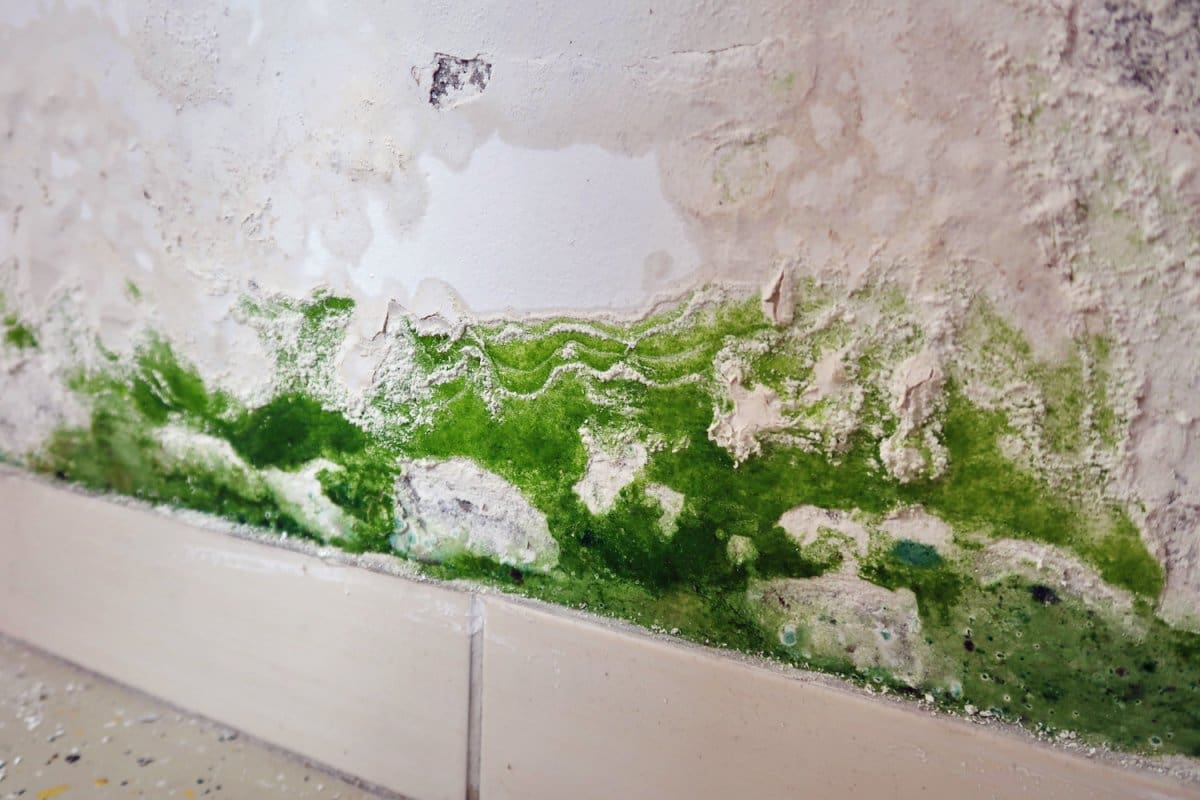Different Types Of Mold Growth In Homes
Mold is like a sneaky visitor who can come into our homes without an invitation. It's not something we want, but sometimes it shows up anyway! Different types of mold can grow in our homes, and they can be kind of tricky. Some molds like to hang out in damp places, like bathrooms or basements, where there's lots of moisture. Others like to hide in dark corners or behind walls where we can't see them.
The most common types of mold in homes that are harmful. They are Cladosporium, Aspergillus, Penicillium, Alternaria, and Stachybotrys. Each type of mold looks a little different and can cause different problems. Cladosporium may show up as black or green spots while Aspergillus can be powdery and white. Penicillium often appears blue or green. Alternaria can be dark and fuzzy, and Stachybotrys is sometimes called black mold because of its dark color.
When we find mold in our homes, it's important to deal with it. We can clean it up using special cleaners and make sure to fix any leaks or damp areas where mold likes to grow. Keeping our homes dry and clean helps keep mold away and keeps our families healthy!
Different Types Of Mold And Their Disadvantages
Cladosporium: A Common Household Mold
Cladosporium is a type of mold that can sometimes show up in homes, especially in damp or humid areas like bathrooms or basements. It looks like little spots or patches that can be black, green, or brown while Cladosporium isn't usually harmful to healthy people. It can cause some folks to sneeze or cough if they're allergic to it.
Related: How To Remediate Mold And When Is Mold Remediation Required
If you find Cladosporium in your home, don't worry! You can clean it up. First, make sure to wear gloves and a mask to protect yourself from breathing in any mold spores. Then, mix some warm water with a little bit of dish soap or a mold cleaner. Use a sponge or cloth to scrub the moldy area until it's clean. Make sure to dry the spot afterward to prevent the mold from coming back.
Penicillium: The Mold Behind Food Spoilage
Penicillium is a type of mold that can grow on different types of food. When you see moldy bread or cheese, it's often Penicillium doing the spoiling. This mold likes to grow in damp and dark places. Especially on foods like bread, fruits, and cheese that have been left out for too long. It's important to check food and throw away anything that has mold on it because eating moldy food can make you sick.
Related: How To Remediate Mold And When Is Mold Remediation Required
To prevent Penicillium from ruining your food, make sure to store food in a cool and dry place. Keep your fridge clean and organized so that mold doesn't have a chance to grow. If you see any mold on food, don't try to cut it off and eat the rest - throw the whole thing away to stay safe. Be aware of Penicillium and take steps to keep your food fresh. You can avoid food spoilage and stay healthy!
Alternaria: The Outdoor Mold That Sneaks Indoors
Alternaria is a sneaky mold that loves to travel from outdoors to indoors. Especially when it's warm and damp outside. This type of mold can hitch a ride on shoes, clothes, or even through open windows and doors. Once it finds its way inside, it can start growing on damp surfaces like walls, ceilings, or even on old food.
You might not notice Alternaria right away because it tends to hide in dark, humid places. But if left unchecked, it can spread and cause problems for people who have allergies or asthma. The good news is, you can tackle Alternaria by keeping your home clean and dry. Use exhaust fans in bathrooms and kitchens. Keep indoor humidity low. These steps can stop this sneaky mold from taking over your space.
Related: A Simple Guide To Spotting Removing And Preventing Mold Odor
If you do spot mold, it's essential to clean it up using mild soap and water or a vinegar solution. For larger mold problems, you might need to call in a professional to help remove it. To keep your indoor air healthy.

Aspergillus: A Mold With Many Varieties
Aspergillus is a type of mold that comes in different varieties. It's kind of like how there are many types of apples or different kinds of toys. This mold can be found in places where there's moisture, like damp walls or old food. Aspergillus mold looks like fuzzy spots that can be different colors. Such as green, yellow, or even black. It's not something you want in your home because it can cause problems if you breathe in too much of it. Especially for people who already have asthma or allergies.
To get rid of Aspergillus mold, you need to clean up any wet areas in your home, like bathrooms or basements. Using a mixture of soap and water can help scrub away the mold. Sometimes, you might need to ask a grown-up for help. You can also use special mold-killing products. It's important to keep your home dry and clean to prevent Aspergillus mold from coming back.
Stachybotrys Chartarum: The Notorious "Black Mold"
Stachybotrys chartarum, also known as "black mold," is a type of mold that can cause big problems in homes. It's called "black mold" because it looks dark and slimy, kind of like melted chocolate. This mold likes to grow in damp places, like bathrooms or basements. Where there's too much moisture.
The tricky thing about black mold is that it can make people sick if they breathe in its spores. These spores are like tiny seeds that float in the air. When people breathe them in, they can get coughs, sneezes, or even more serious health issues. That's why it's super important to get rid of black mold if you find it in your home.
Related: How Can I Make My House Smell Good?
To remove black mold, you need to clean the affected area well with soap and water. Sometimes, you might need to use special cleaners to get rid of it completely. And don't forget to fix any leaks or water problems to stop the mold from coming back!
Fusarium: A Mold That Thrives In Damp Conditions
Fusarium is a kind of mold that likes wet places. This mold can be of different colors, like white, pink, or red, and it can spread if it finds a good spot to grow. It's important to keep an eye out for Fusarium because it can cause problems if it gets too cozy in your home. When you see it, you'll want to clean it up right away. Using a mix of soap and water can help scrub it away. Make sure to dry the area well too, so Fusarium doesn't come back.
Aureobasidium: A Mold Often Found On Painted Surfaces
Aureobasidium is a type of mold that you might find on painted surfaces in your home, like walls or ceilings. It looks like black or brown spots and can spread if not taken care of. This mold loves damp areas, so places with water leaks or high humidity are its favorite spots to hang out.
To get rid of Aureobasidium mold, you can use a mixture of water and mild detergent to scrub the affected area. Make sure to wear gloves and a mask to stay safe while cleaning. If the mold is in a large area or keeps coming back contact a professional for mold removal.
Remember, keep your home dry. Fixing leaks can help stop Aureobasidium mold. Regular cleaning and maintenance are key. They keep your home free of mold and healthy for everyone.
Trichoderma: A Mold Associated With Water Damage
Trichoderma is a type of mold that can show up in homes when there's water damage. It's like a sneaky guest that likes to hide in damp places, especially after floods or leaks. Trichoderma can be green, white, or yellowish and may look fuzzy like cotton candy. Even though it might seem harmless, it can cause problems if not taken care of.
When you see Trichoderma, it's important to act fast to get rid of it. You can do this by drying out the area where it's growing and cleaning it up. Sometimes, you might need help from professional odor removal services. Keeping your home dry helps. Fix any leaks to prevent Trichoderma's return. So, remember to keep an eye out for this mold and take steps to keep your home healthy and mold-free!
Preventing Tips For Mold Removal
Control Moisture: Keep indoor humidity levels below 60% to inhibit mold growth. Use dehumidifiers and ensure proper ventilation in bathrooms, kitchens, and basements.
Fix Leaks
Fix any leaks in plumbing, roofs, or windows. This stops water from accumulating and mold from forming.
Check Indoor Plants
Avoid overwatering indoor plants. Too much water can cause mold in the soil and plants.
Use Mold-Resistant Products
Consider using mold-resistant paints, drywall, and insulation in moisture-prone areas. These areas include bathrooms and laundry rooms.
Clean Regularly
Clean and dry areas prone to moisture daily. These areas include shower curtains, window sills, and refrigerator drip pans. This prevents mold buildup.
Ventilation
Ensure good ventilation in attics, crawl spaces, and garages. It reduces humidity and increases airflow, preventing mold growth.
Use Exhaust Fans
Use exhaust fans in bathrooms and kitchens. Use them while cooking or showering to remove extra air moisture.
Inspect and Maintain HVAC Systems
Inspect HVAC systems daily. This includes air ducts and filters. It prevents mold spores from spreading in the home.
Address Water Damage
If floods, leaks, or storms cause water damage, dry and clean the area within 24-48 hours. This prevents mold growth.
Professional Mold Inspection and Remediation
Consider hiring professionals to inspect for mold and remove odors. This is especially important in big or persistent cases.
Considering professional mold odor removal services when needed. You can create a healthier indoor environment free from mold.
Related: A Simple Guide To Spotting, Removing, And Preventing Mold Odor
Hire Professional Peoples When Needed
When you need help with mold testing and inspection. It's smart to hire professional people. These are experts who know all about finding and getting rid of mold in homes. They use special tools and skills to check for mold in places you might not see, like behind walls or under floors. If they find mold, they know the best ways to clean it up so it doesn't spread or make you sick.
In Maryland, we have the professional services that you deserve. Our team knows what to do to keep your home mold-free and your family healthy. So, when you're dealing with mold troubles, don't worry! Call in the pros and let them take care of everything.








